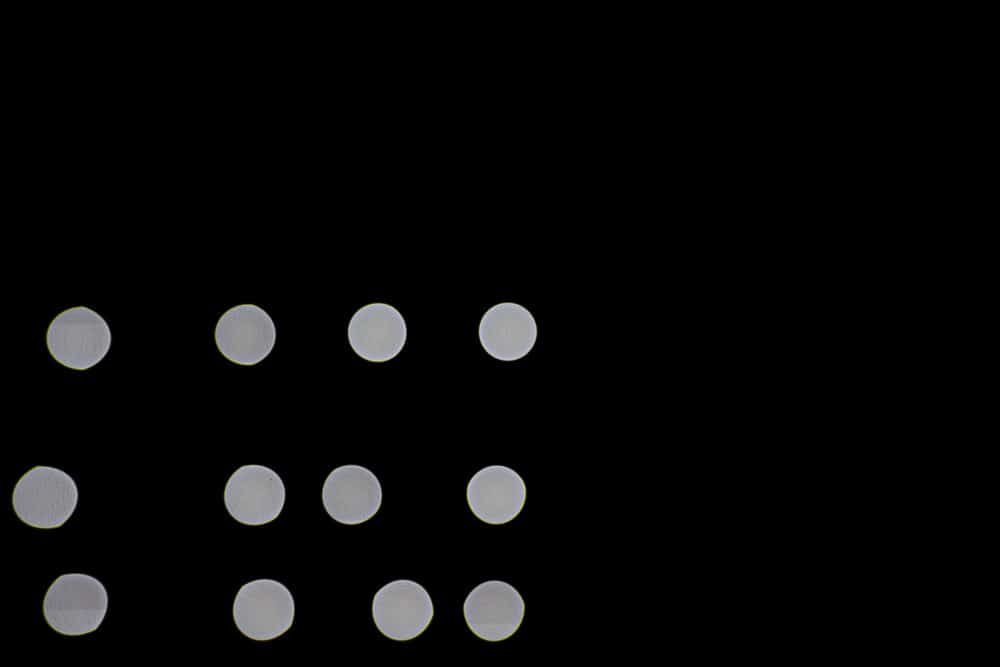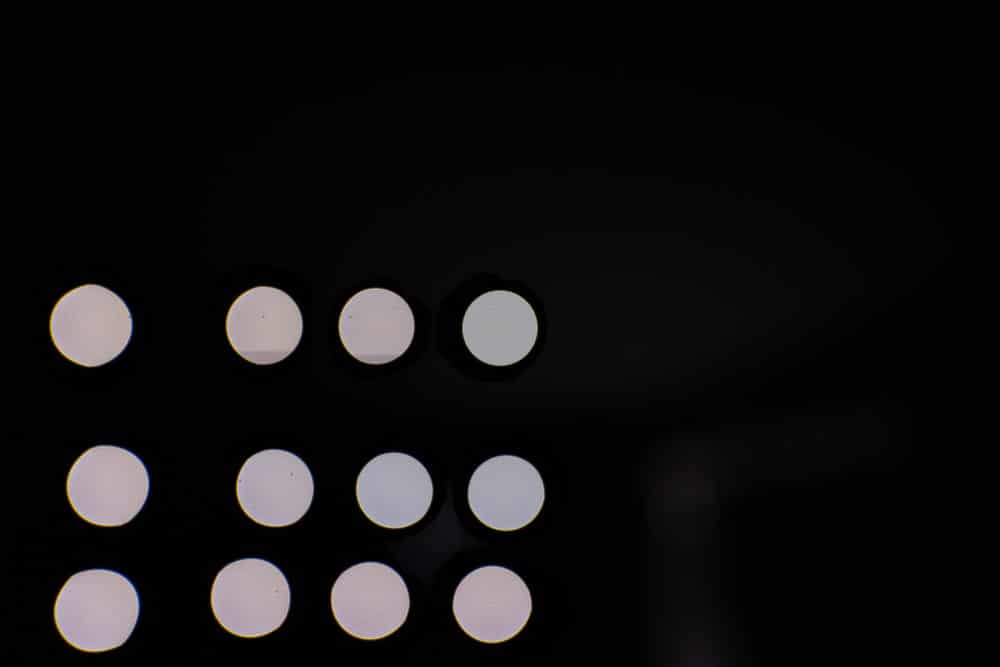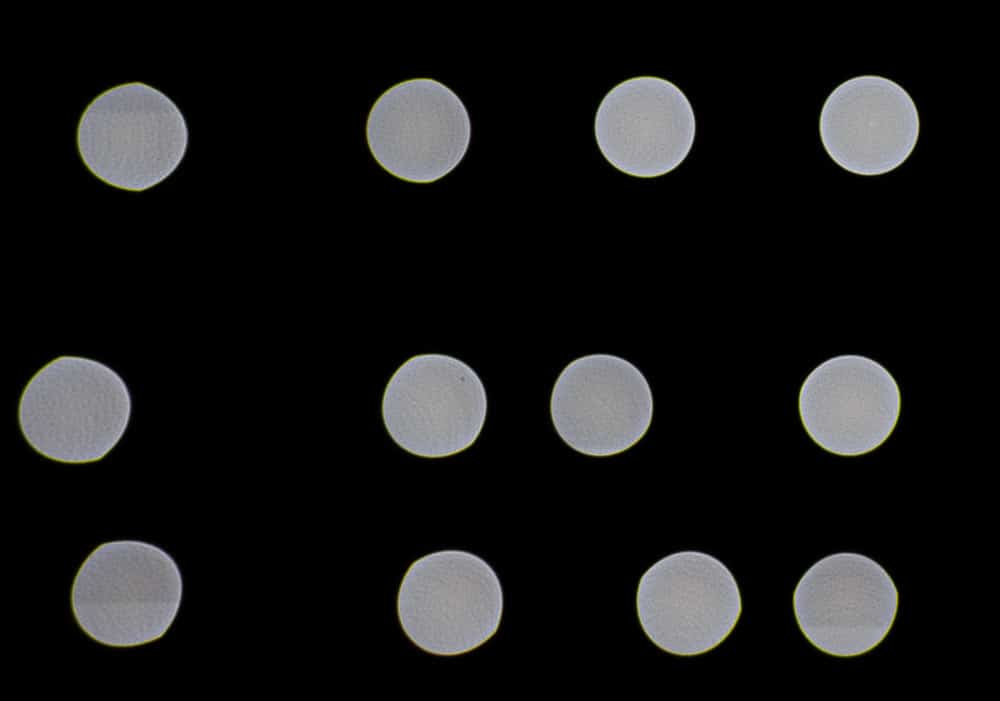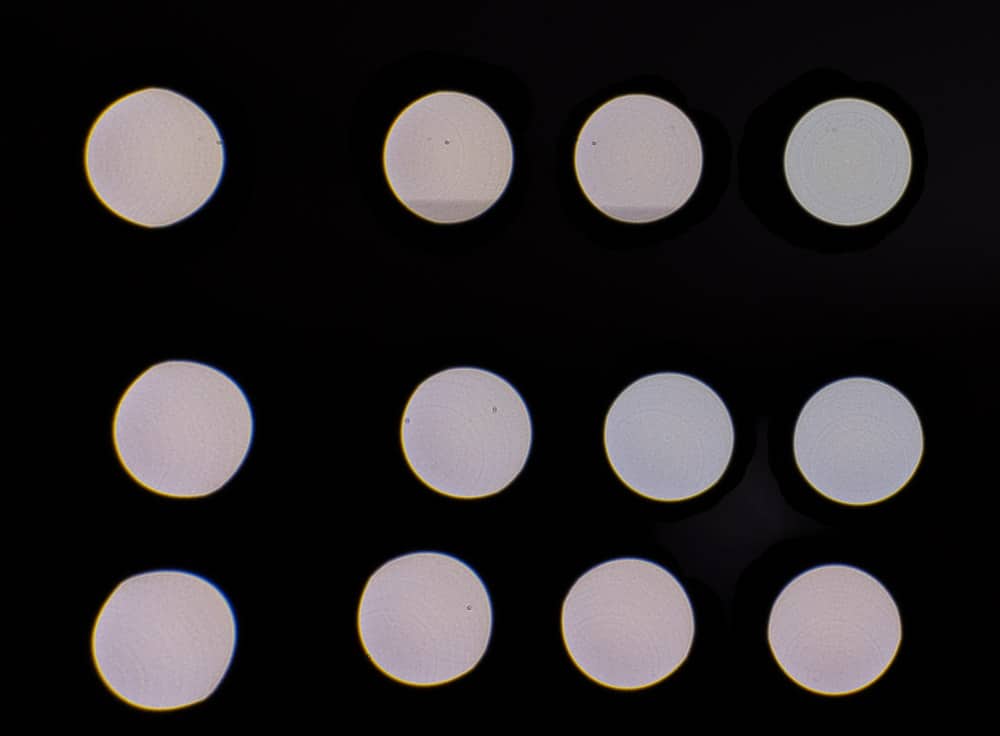There are two pieces to bokeh. The first is what things look like when they are well out of focus (OOF), and the second is how the transition from OOF to in-focus happens. The second is complicated, but the first is very simple. What you see when part of the image is well OOF is each point in the image times the OOF point spread function (PSF, in this case, aka bokeh balls). So you can understand what the bokeh in the OOF regions is gonna look like by looking at the OOF PSF across the frame. After you’ve looked at a few of these images that I’m going to show you here, you can see how the deep-OOF bokeh of just about any lens is going to look like with just about any scene.
The technique that I used to obtain the images below is explained here. I moved the camera around and captured the PSFs in just one quadrant for each camera, because these things are radially symmetric for well-constructed lenses.
Here’s the set of point spread functions uncropped:


And here they are cropped to the lower-left quadrant:


Ignore the horizontal banding. That’s the LED flashlight interacting with the focal plane shutter of the cameras. The OOF PSFs should ideally be gray freatureless circles. The bright rings around the perimeter are defects, but these are quite benign compared to many lenses I’ve seen. In a perfect world, you wouldn’t get the cat’s-eye effect that you see as you get further away from the center of the image. That is due to mechanical vignetting in the lenses, and is well-controlled here.
Full marks to both lenses.
JimK says
I’m posting this on behalf of Brandon Dube:
Some of the cat’s eye in (very) wide angle lenses is actually a projection issue. E.g., fisheyes never really have any vignetting to speak of, but the OOF PSF becomes extremely stretched in the corners. This is because the pupil is actually increasingly oblique to the image.
I wouldn’t call it “mechanical vignetting” either, just vignetting suffices, but that is (somewhat) a matter of taste.